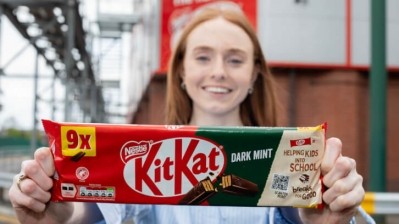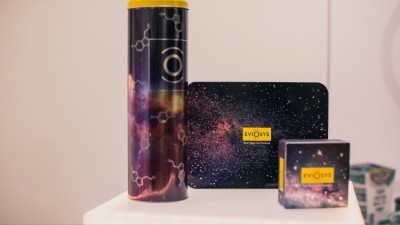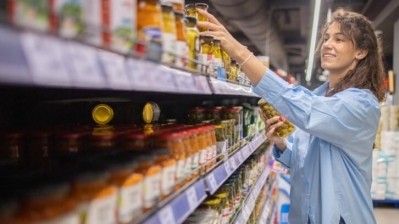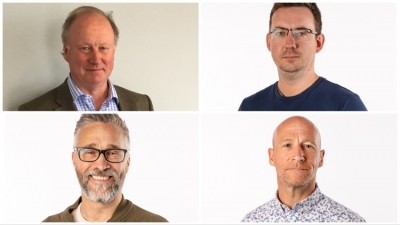Long read
Nestlé's big cocoa plans for full segregation and fairer wages

In basic terms, a living income covers the cost of food, water, housing, education, healthcare, transport, clothing and other essential needs. A cocoa farmer typically earns just 74p a day, according to Fairtrade – not nearly enough to cover all these needs, earning cocoa the nickname of the ‘poor man’s crop’.
In West Africa, where most of the world’s cocoa is sourced (around 70%), many farmers growing this commodity live in poverty.
In 2009, Nestlé – home to the likes of Aero, Yorkie and KitKat and one of the world’s biggest consumers of cocoa – launched its Cocoa Plan in Côte d’Ivoire, an area of West Africa.
The Cocoa Plan is built upon three pillars: better farming, better lives, and better cocoa; and has engaged more than 150,000 cocoa-farming families so far.
Scaling up and doing better
This year brings an extension of that plan – the Income Accelerator – a family-centred initiative that is trying to bridge the living income gap more quickly, while reducing child labour risks and empowering women in the community.
Reflecting on the company’s progress, Darrell High, global cocoa manager at Nestlé, said the firm has “achieved a lot” since the launch of its Cocoa Plan, training more than 100,000 farmers and putting in place child labour monitoring and remediation systems for example, but “frustrations” persisted.
“We didn’t always see enough change on the fields when we went there and, sometimes, we did great things like work on gender empowerment for example, but we didn’t see it happening at scale,” he explained.
To put this scale into context, the Nestlé factory in York alone produces up to 12,000 tonnes of cocoa ingredients every year to make chocolate for a range of brands including, KitKat, Quality Street, Aero, After Eight, Yorkie, Rolo and Munchies.
So the conundrum is how exactly do you do drive change at that kind of mass scale? This was the spark that ignited Nestlé Income Accelerator which has recently concluded its pilot and has begun its own upscaling journey.
Like the Cocoa Plan pilot programme, this latest project was established in Côte d’Ivoire with the help of the non-profit Rainforest Alliance.
Launched in 2020, a trial was run with 1,000 farmers in partnership with the York factory, two co-ops and one supplier.
Reflecting back, High said that whilst it was challenging, the trial was a success. As such, 2022 saw the programme expanded out to 10,000 farmer households, six suppliers and 18 farmer co-operatives.
“We learnt a lot and that enabled us to scale it further.”
This year, the programme is moving up to 30,000 households and has been expanded into Ghana as well, including 2,000 farmers in that area.
The ambition is to reach approximately 160,000 cocoa-farming families in Nestlé's global cocoa supply chain to create impact at scale by 2030.
What’s different about the Nestlé Income Accelerator Programme?
The programme is unique as it focuses on the households rather than the farmers, whilst providing incentives to meet certain targets.
“Typically, sustainability programmes pay a premium through the cocoa, this is on top of that,” explained High. “We have focused a bit too much on farmers before. We need to extend that to the household. We have an overall objective to close the gap to a living income. To do that for everyone is extremely hard, but we know we can reduce that gap.”
The incentive is also paid per household not per tonne of cocoa, which High said gives “more money to the poorer households in effect”.
The goals of the programme are divided into four areas, with a €100 reward paid per target hit. If the participating households achieve all four, a further €100 is paid.
- School enrolment: Financial incentives to families for enrolling all children between 6-16 in school
- Good agricultural practices: Such as pruning, which increase crop productivity (goal is to have at least 1ha of farm pruned to standard)
- Agroforestry: Performing agroforestry activities to increase climate resilience, like planting shade trees
- Diversified incomes: Cocoa-farming families will receive mobile payment empowering women and encouraging additional sources of income such as growing other crops, beekeeping or processing other products like cassava.
“The incentive is reduced to €250 after two years, as we see the necessary changes happen,” High added.
To help households meet the goals laid out in this plan, Nestlé is lending support where needed, for example offering insight into good farming practices and setting up and equipping pruning groups to carry out this laborious and difficult task.
“We’re hearing from farmers ‘my field is in good health’,” High said, adding that the progress has been significant so far.
For example, in 2023, 19,635ha were pruned compared to 10,186ha the year before. Moreover, after 18 months, the company has lifted the rate of its living income from 3,500k a year to 4,700k in Cote D’Ivoire.
While this is a promising acceleration in the right direction, more work is needed, with the living income in Cote D’Ivoire estimated to be around 7.5k dollars per household.
As High summarised, a living income “is calculated on local costs plus the average number of people in a household, in Cote D’Ivoire that’s usually seven and a half on average”.
Verification and traceability
In 2024, the first KitKat made with cocoa mass from beans grown by farmer families engaged in this accelerator project came to the UK market – with the tagline ‘Breaks for Good’.
With greenwashing becoming a well-known term in recent years and further, stringent regulation coming into place that mandates increased levels of good practice and traceability, it was important for the confectioner to ensure that the goals of its programme were actually being met – and continue to be as it grows.
As High referenced (see earlier in article), most “frustrations” come from a lack of follow through. Moreover, increasing importance is being placed onto transparency from consumers.

In fact, according to EIT’s Food Trust Report 2023, confidence in sustainability, healthiness and authenticity of food is pretty rubbish, with consumers reporting that they generally rely on external forms of confirmation.
As the report reads, consumers ‘cannot determine this [sustainability and authenticity] themselves and must rely on other information, such as packaging and labels. And since this information and the parties providing it are not broadly trusted, confidence in the sustainability of food is the lowest of all aspects (health, taste, safety, authenticity)’.
Research outlined in the same report shows that trust can be built by ‘showing competence’ and ‘being open’. And whilst the report flagged ‘authorities’ as the least trusted among a list that included manufacturers, restaurants, retailers and farmers, trust in retailers has been dropping since 2021 from 53% to 50%.
People generally believe that retailers will bring in safe food, but they want retailers to demonstrate that they care about health and the planet. This means that manufacturers need to be doing their utmost in deliver on these areas not just because it’s the right thing but to hold onto or secure new listings.
As part of the accelerator project, the Nestlé has introduced a new way of tracking and tracing its cocoa – which involves a stringent separation process from other cocoa sources to ensure that it can guarantee the claim of ‘Break for Good’ on its KitKats. The pack now features a QR code which consumers can scan to learn more about how the programme works.
Tracing from bean to bar
For the Income Accelerator Programme, traceability begins with the farmers.
Beans are extracted, dried and bagged by the farmers and sold to cooperatives. Each bag of cocoa is tagged with unique barcode.
Cargill (which supplies the York factory) pays farmers directly using ‘mobile money’ which is validated by the cooperative.
The cocoa is then physically separated at the cooperative’s warehouse. GPS coordinates are recorded at time of transaction to provide additional level of verification.
Bags are sent by truck to Cargill facilities in Abidjan in the Côte d'Ivoire. The bags are emptied, the beans cleaned and checked, and then transferred into a container. These are tagged and made ready for shipment.
The beans head for Liverpool in the UK and arrive at the warehouse there where they are separated and checked again.
They then make their way to Cargill in York by truck. Once arrived, the beans are cleaned of any foreign matter and the waste discarded. Bean breaking and removal of shells is carried out, leaving behind what is known as ‘nibs’.
It’s then onto the roasting phrase for the cocoa nibs and then grounding, until the nibs turn into paste called cocoa liquor – this is combination of cocoa butter and cocoa solids. Once liquor, it’s delivered through a connected pipeline that runs from the Cargill site to the Nestlé facility next door. This leads into a part of the building called ‘Elect’.
The refinery machines and conches live in here. Refining is the process that allows the chocolate to become smoother – it transforms the cocoa from 1/2mm to 0.025mm in this case. This process makes it a powder, with the conch used to liberate the fats – a process which turns it back into a liquid.
This goes into storage tanks; there are eight 30 tonne tanks on site and the mixture travels through another system of pipes – the rate at which this is done means that there is 4 tonnes of chocolate in the pipe at all times!
The chocolate arrives at the manufacturing line – and in KitKat’s case it’s moulded and then enters a cooling process for 30 minutes.
The moulds are then twisted by the machines to loosen the bars and gently smacked with a hammer-like mechanism, so they fall out without breaking, before heading off to the packaging line.
From arrival in the ‘manufacture’ section, it takes about an hour for this process to conclude.
The York site makes roughly 700 KitKat bars a minute per packaging machine (of which there are five), delivering an estimated 1.5bn of the beloved bars each year.
Driving change on mass not mass balance
Offering further insight on the brand’s progression and future vision, Cheryl Allen, head of sustainability at Nestlé Confectionery UK & Ireland, said: “Last year, we bought 350k tonnes of cocoa beans, 70% coming from West Africa. Of that, 85% came from farmers who were in some way supported by Nestle Cocoa Plan.
“We are expecting 45k tonnes of cocoa to come from farmers enrolled in the Income Accelerator Programme this year.
“The intent for the end of next year is that all Nestlé’s global requirements for cocoa can be supplied by farmers supported by the Nestlé Cocoa plan – either Rainforest Alliance Certified (as is the case for Europe) or in certain origins, like Brazil, it will be mass balanced and verified by a third party.
“The longer-term commitment, declared at start of 2022, is a 1.3bn Swiss Franc investment through to 2030. This comprises the investment needed to support Income Accelerated Programme, other activities in Nestlé Cocoa Plan, and to develop segregated supply chain.”
Some might question why now – and what’s taking so long. As outlined in the EIT’s latest Trust report, while consumers demand more sustainable and authentic food, their actions also tell us that they want prices to remain at affordable levels.
Speaking with Allen on this, she said this has been one of the key reasons progress has – and is – slow: “Both consumer demand and broader stakeholder requirements and engagement tell us this is necessary, people are increasingly looking for assurance of what they are buying.
“We have to prioritise, in sequence, the activities [and investments], because actually as much as we’d like to do everything straight away, the reality is it will cost money.
“We need to be careful we are not passing costs to consumers.”
She added: “But also some significant intervention is needed in supply chain to make this happen. It requires rethinking and engagement with suppliers to deliver this on a scale.
“It’s probably going to take between 5-6 years to move all our cocoa to fully segregated flows.”
That commitment will mean stretching this across 150 locations globally – a challenge which Nestlé intends to take on, one step at a time.
“We are looking to increase this [cocoa segregation] year on year,” confirmed Allen. “A good place to start is with our flagship brand – with KitKats – in our flagship markets, including York.”
But in the near-term (this year), Nestlé plans to use segregated cocoa butter for all its KitKat chocolate in 29 countries in Europe. And, whilst KitKat is flying the banner, currently all the company’s UK chocolate is now produced using cocoa ingredients sourced through the Income Accelerator Programme.

“Sourcing cocoa with this level of traceability, at the scale that Nestlé operates, is no mean feat. It has taken a lot of hard work by many people, but we know that there is still more to be done,” said Mark Davies, managing director, Nestlé Confectionery UK & Ireland.
“We will continue to push to make a positive impact on the lives of farmers and their communities and contribute to a more sustainable cocoa industry.”
Kerry Daroci, cocoa lead at the Rainforest Alliance – long term partner and a key collaborator in this project – added: “Achieving this level of traceability for all its UK chocolate serves as a significant benchmark for the industry and highlights the impact of collaboration on driving positive change for both farmers and the environment.”
Want to hear another positive farming story? Listen to our latest podcast with Wycliffe Sande, the founder of Blue Turaco, about his work to improve the lives of those in the community he grew up in, one cup of coffee at a time.



















